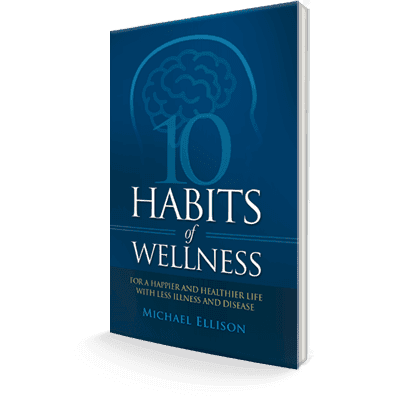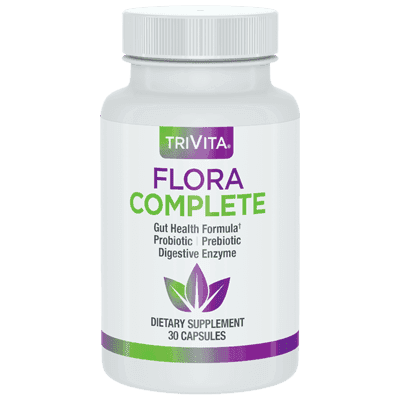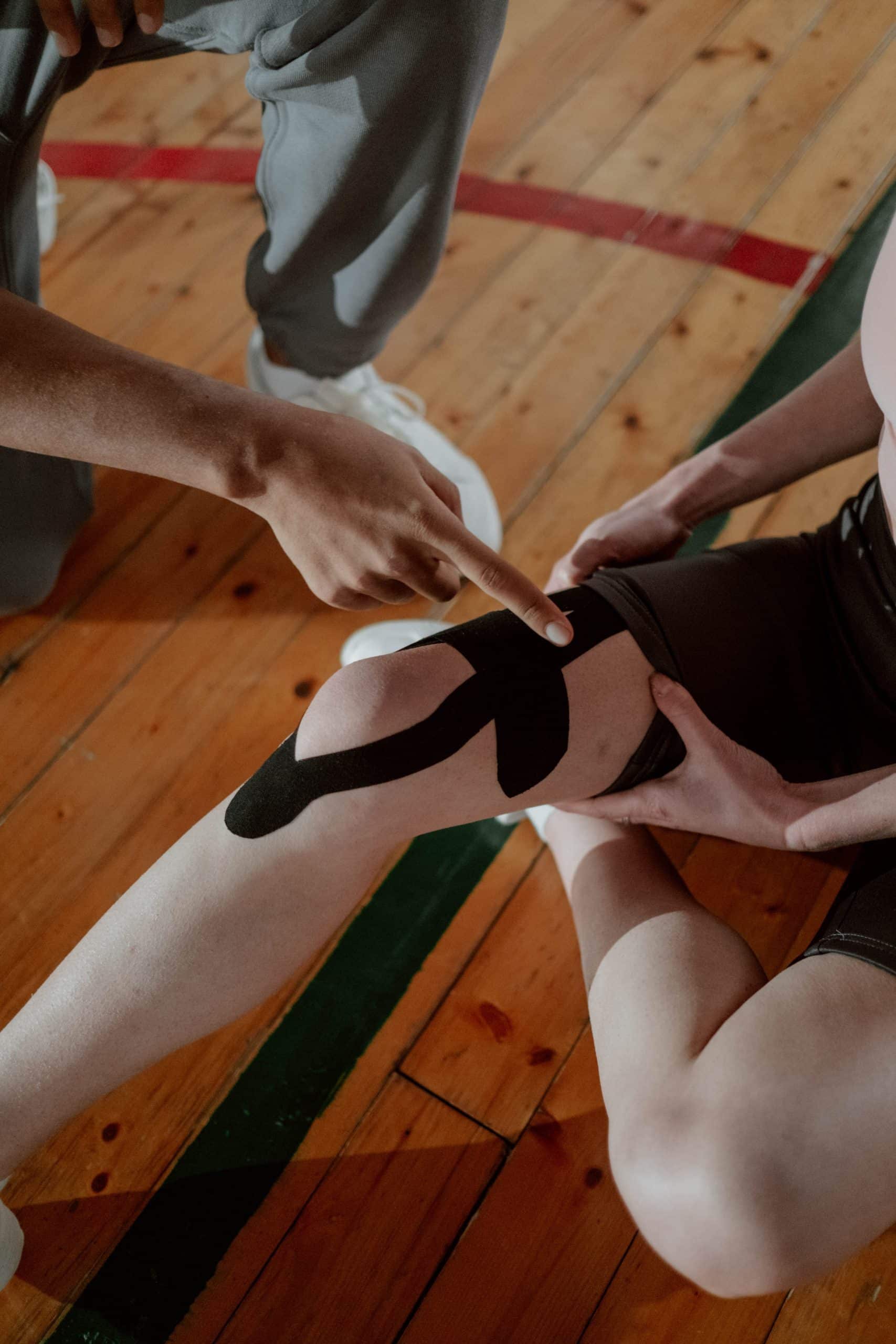Your cart is currently empty!
Category: General Wellness
-

Health is Wealth… How Invested Are You in Yours?
Most of our adult lives are focused on working, saving and investing as much money as possible for our family’s future.
But not nearly enough emphasis is placed on creating and maintaining our health. And when you think about – what good is accumulating financial wealth, if we’re not healthy enough to enjoy our lives?
It makes no sense at all, yet this has been the case for millions of people in the Western world for a very long time. Perhaps you can relate?
Today, more than ever before in our history, people are waking up and taking back control of their health and wellbeing.
“If it’s to be, it’s up to me!”
That’s one of my personal sayings, and it applies to my health as well. I prefer to take good care of my body, so my body can take care of me.
As we all know – those of us who have lived long enough – we can mistreat (or neglect) our bodies while we’re young, without paying the piper. But sooner or later, the effects will start to show up, if we don’t do something different.
Little by little, imperceptible at first, we may start to notice how we get a little more agitated than we used to. Or our minds don’t seem as sharp as they once were. And if you have grandkids, I’ll bet your energy levels are not as high as when your children were young, right?

I remember my mother saying, “I’m glad the Good Lord gave me my children when I was young… because I sure don’t have the energy to do it now!” She said that on numerous occasions, as she watched me running around with my two, young sons like the Energizer Bunny.
Now that I have grandchildren of my own, I have a much better appreciation of what she meant. Life is such a great teacher, isn’t it? So we grow, we learn, and then we adapt. And when we know better, we do better.
Because I know that health is wealth, what can I do to take better care of my body? What can I give it, so I can live a long, happy and vibrant life? I put an emphasis on ‘vibrant’ because I don’t want to just live longer… I want to live healthy, while living much longer. I bet you feel the same way too!
We’re fortunate today to have so many amazing advancements in health care. We’ve come a long way and have experienced so many breakthroughs in science and medical technology.
While we’ve made great strides, there are still some very worrisome challenges to overcome. Challenges that often prevent us from living the joyful, healthy lives that we all want and deserve. The kind of health that
I believe is our birthright.As we look at these challenges, there are some very positive things happening that you’ll want to know about. Knowledge is power—but only when we DO something with that knowledge.
I want to share some information about the culprit behind many chronic diseases that continue to plague so many people… chronic inflammation.

Chronic Inflammation and What YOU Can Do About It
First, let’s distinguish between ‘acute’ inflammation and ‘chronic’ inflammation. Acute inflammation is what happens when you cut your finger or get stung by a bee – or when bacteria gets into your system some other way.
What happens? Well, first you feel the pain, swelling, and redness. This is the intelligence of your body, rushing in to attack any foreign invaders. They will be quickly neutralized, and you’ll feel better very soon.
But what about inflammation that your immune system fails to eliminate quickly and, instead, morphs into a condition that can last for many months – or even years?
This is called chronic inflammation. It’s when your white blood cells attack nearby healthy tissues and organs (looking for the bad guys), which sets up a chronic inflammatory process.
Left unchecked, this inflammatory process plays a central role in some of the most challenging diseases of our time, according to a Harvard Medical School Guide, Understanding Inflammation:

- Heart disease
- Cancer
- Rheumatoid arthritis
- Asthma
- Diabetes
- Alzheimer’s
What Does Science Say About Chronic Inflammation?
Scientists suggest many factors contribute to chronic inflammation, including genetics, exposure to environmental toxins, and lifestyle factors.
There’s not much you can do about your genes. And it’s an ongoing challenge to avoid toxins, like polluted air, heavy metals, and pesticides… even though we do our best.
We can, however, make some lifestyle changes that are just common sense. We can make sure we eat healthy fats, instead of the unhealthy ones. We can avoid processed foods. We can exercise. And we can (and must) get plenty of sleep, so our body can restore itself.
Our body is an amazing vehicle, but it does require some TLC to run efficiently.
You’ve probably heard the old saying, “You are what you eat.” I feel there’s a lot of truth to that — and the British Journal of Nutrition agrees. In their May 2016 edition, they summarized a number of studies, supporting the notion that dietary polyphenols may lower inflammation in the body.
Which foods are high in polyphenols, you may ask? They include:
- Onions
- Red grapes
- Green tea
- Coffee
- Turmeric
- Cherries
- Plums
- Dark, leafy green vegetables (spinach, kale, collard greens)
And the Harvard Medical School Guide, Understanding Inflammation, suggests a few specific foods that provide healthy doses of omega-3 fatty acids, which have LONG been shown to reduce inflammation:
- Olive oil
- Flaxseed oil
- Fatty fish (salmon, sardines, and mackerel)
Now, this is amazing because omega-3s can cross the blood-brain barrier, so they may even help lower inflammation associated with Alzheimer’s disease and reduce the risk of stroke.

More Ways to Combat Chronic Inflammation
In addition to eating all the healthy foods we can, we can help our body by avoiding the bad stuff. Leave off the sodas, refined carbs, and processed foods as much as possible. Exercise regularly, manage your body weight (obesity is a risk factor for inflammation). Also, don’t smoke. And by all means… get enough sleep! You’ll also want to see your doctor and dentist for regular check-ups. Good oral health is mandatory to prevent inflammation. (See page 13 in the Harvard guide on inflammation.) If you don’t have one, just call us, and ask how to get yours. There’s a test you need to ask your doctor to run for you. Chances are s/he won’t offer it, but you can be assertive and ask for it. It’s very inexpensive and may reflect the level of inflammation in your body. What test, you ask?

CRP Blood Test for Heart Disease
C-reactive protein (CRP) test has been recognized in recent decades, as a potential measure of risk for heart disease. Scientists believe that atherosclerosis is the result of the process of damage, repair, and inflammation in the linings of the arteries.
Early detection is key to knowing what’s going on inside our bodies.
Even though tests for cholesterol provide a lot of useful information – about HALF of heart attacks occur in people with normal cholesterol numbers!
Several studies have shown that, among people with normal cholesterol numbers, those with increased CRP levels have a “several-fold” higher risk for heart problems.
Additional research has shown CRP to be a BETTER predictor of cardiovascular events than other inflammatory markers. These cardiac events include heart attacks, strokes, bypass surgery, and angioplasty. (See the Harvard guide for more details.)
Inflammation is no joke. The World Health Organization (WHO) ranks chronic diseases as the greatest threat to human health. And the prevalence of diseases associated with chronic inflammation is anticipated to increase persistently for the next 30 years in the United States.
125 million Americans were living with chronic conditions in 2012. And 61 million (21%) had more than one.
Nearly 60% of Americans had at least one chronic condition in 2014.
42% of Americans had more than one condition in 2014.
12% of adults had 5 or more chronic conditions in 2014.
Worldwide, 3 of 5 people die due to chronic inflammatory diseases like stroke, chronic respiratory diseases, heart disorders, cancer, obesity, and diabetes.

Time to Reclaim Responsibility for Your Health
Our natural state is health. It is our birthright. But our lifestyle choices, environmental toxins, and stresses of modern life ALL conspire to rob us of a vibrant, healthy and joyful life.
It’s time to reclaim yours. Time to put more emphasis on creating health than creating financial wealth… because health is wealth!
At TriVita, our commitment is to help you enjoy a healthy physical, emotional and spiritual life.
- We want to help you take care of your body because you only get one.
- We want to inspire you toward positive emotions that play a huge part in your health.
- We want to encourage you to live a life with meaning and purpose, as you attune to your Spiritual nature.
We’ve created a product that many people are finding helpful to combat the effects of chronic inflammation – Nopalea. Check it out, and see what you think. We’re just a phone call away, if you have any questions.
It’s our honor to serve you.
-

Living For What Matters Most in Life!
Never in modern-day history have we had the opportunity to evaluate our way of life as we have in the past few weeks with the impact and mandatory directives coming with the world pandemic!
And the question we have all had to seriously grapple with is; “What matters most in life?”
It is so insightful as the question truly reveals how we identify with our values, behaviors, habits and even addictions we may not have even realized. I have many friends who love sports. Some have come to find out it’s more than loving sports, they are addicted to sports! The loss of current sporting events has rocked their world!
Just sixty days ago our political views divided and separated us from the very essence of what matters most. We divided, argued, debated, resented and yes some angrily caused physical and emotional damage to one another because of different views!
But something is beginning to happen in this shocking and most challenging time. Our difference of opinions, beliefs, and positions is becoming secondary to a cause of something bigger than ourselves and is actually allowing us to reconsider living for what matters most!

We hear it repeatedly; what matters most is our health, safety and the care for all, especially for those most vulnerable. We have even put our economy second to this priority. Prior to the Coronavirus, I repeatedly have seen those aged and vulnerable disregarded and disrespected. Only, the answer to the question of; “Are you living for what matters most?” could lead us to these extreme measures we are seeing today. Our governments in both the USA and Canada are shutting down what most everyone considered to be what mattered most in their lives; their jobs, sports, dining, drinking, events, travel and many other aspects of our way of life.
My point here is not to determine, debate or question the why, what or how of these mandates, but to raise the question to each of us; can we learn and better identify living for what matters most? This could potentially be the greatest pivot point in modern-day history for; “living for what matters most!”

Prior to “stay at home” government mandates, we were too busy for family time. Not enough time to bring the family together for family meals. Too tired to spend quality time with family members from the hectic lifestyle we have chosen! No time to pray together, to play together and just be together!
If there was ever a time to evaluate what matters most in our lives, it is today. And it’s not a debate of right or wrong, it is the reconsideration of priorities to what matters most in life.
In the scriptures of 1 Corinthians 13 it says; “Though I have faith so I could remove mountains, though I bestow all my goods to feed the poor, and understand all mysteries and all knowledge, but have not love, it profits me nothing. And now abide, faith, hope and love and the greatest of these is love.”
It is my prayer and hope that during this time of isolation, stay at home, and social distancing, it is spent in a time of reflection and decision making of living for what matters most. We have three pathways of choice; to be indifferent, to restore indulgence, or to seek the influence of living for what matters most in life!
-

I am so passionate about wellness because…
I am so passionate about wellness because there was a time I lived my life without it!
The misery index rises fast without wellness. There is nothing like living life with the joy of wellness. That is why I started Trivita and the Trivita Clinic of Integrative Medicine. I want people to experience the joy of greater wellness.
The joy of living with wellness is also a much better motivator than the fear of dying!!
In his book The Spectrum by Dean Ornish, M.D., he writes, “When you eat a healthier diet, quit smoking, exercise, meditate, and have love in your life, your brain receives more blood and oxygen, so you think more clearly, have more energy, and need less sleep. Your face gets more blood flow, so your skin glows more and wrinkles less. Your heart gets more blood flow, so you have more stamina and can even begin to reverse heart disease. Your sexual organs will receive more blood flow so you will feel more potent.”
If you want those benefits in your life, I have good news…you can have them! You won’t hear this from your average primary care doctor or your physician specialist. They are trained and reimbursed (paid) to treat disease through prescriptions, procedures, and surgeries. I am not anti-medical or pharmacy, nor do I not credit any of the amazing medical advances. However, SELFCARE yields the greatest benefits of living with the joy of wellness.
Significant research conducted by major institutions are now validating, you can live with greater wellness from making better lifestyle choices. You can reverse chronic inflammatory-related diseases and conditions. You are not a victim of your genes! But you are the exclusive recipient of your lifestyle choices, whether promoting the joy of wellness or the misery of disease!
Chronic inflammatory conditions can be reversed with simple consistent lifestyle choices and awareness is your first step to healing.
You are God wired for wellness!
God created us with the systems and organs to optimize the joy of living with wellness. We are fearfully and wonderfully created! Ps. 139:14. And science is now validating you can live with greater wellness by making better lifestyle choices. Poor lifestyle choices can literally turn on genes that promote illness! And of the opposite, good lifestyle choices can turn on your genes to promote wellness! It is all in the choices we choose to make.
I like to find simple but profound principles. If it is simple, I can do it consistently. If it is difficult, then it is likely that there are already too many daily distractions to add complex activities into the day. Think of just two ways that your lifestyle choices will give you the greater joy of living with wellness. Nutrients and nurturing YOU! Just two!
Nutrients are the chemical compounds found in food that are used by the body to function properly. Protein, fats, carbohydrates, vitamins, and minerals. Understanding these nutrients will help optimize how your body functions. Knowing the difference between good fats and bad fats, complex carbs or refined carbs makes a huge difference in your dietary choices. The more you move towards whole foods, pasture-raised meats, and wild-caught fish the healthier the nutrients. Eat nutrient-dense, not calorie-dense foods.
Other aspects of caring for the body fall into nurturing behavior such as sleep, water, breathing, exercise, gratitude, forgiveness, love, meditation, and prayer, all promote nurturing of whole-person wellness!

The awesome you…designed by God to live well and with purpose! Once you begin to embrace these two simple filters in your choices of the day, you will find you are moving towards greater wellness. It is not about deprivation or misery of doing things you don’t like to do. It is a mindset of what nourishes and nurtures your whole-person wellness.
This is not a cure mindset…thank God for every cure that comes from science, but with a world inflamed with chronic inflammatory conditions, the World Health Organization says; chronic inflammatory disease is the now the greatest health risk to all of humanity!
Heart disease is the number one killer and yet it is preventable and reversible for 90% of all people with just using the filter of nutrient and nurturing activities that support the heart. Dr. Ornish validated in a clinical study that patients waiting for a heart transplant who made certain diet and lifestyle modifications, within just a year, no longer needed the transplant! And on the financial aspect were able to avoid an unnecessary expenditure of 250-500,000 dollars per patient!
Just a little bit of daily exercise will help lower cholesterol, improve blood pressure and heart function. With more blood flow, you can reduce the risk of heart attack and stroke, increase bone density and improve your balance reducing the risk of falls and fractures in older adults. With just a little bit of effort, you can improve energy levels, sleep, mood and the list goes on and on! It’s simply lifestyle choices promoting the joy of living with wellness!
Harvard Medical School experts proclaim, you can conqueror and control chronic inflammation!(1)
World-renowned Dean Ornish M.D. proclaims in his book The Spectrum that heart disease is preventable and reversible. Dr. Dale Bredesen, author of The End of Alzheimer’s, created the first program to prevent and reverse cognitive decline through nutrients and nurturing.
Don’t believe the lie that if pharmacy has not come up with a drug, the condition or disease is not treatable or reversible. Scientific research is now proving lifestyle choices can create greater wellness.
There are two other choices that make a huge difference in the joy of living with wellness. The choice of theism or atheism. If you choose theism that there is a God, then you are loved, you have a purpose, you were created to be His Temple here on earth, to do good deeds so others may glorify your God in heaven.
Wellness is the foundation for your good works and for the joy of living!
In the past I would say; pursue wellness with passion, but today, may you pursue it joyfully!
If you are interested in reading more on the power of lifestyle choices, I recommend; The Spectrum by Dean Ornish, M.D.
Referrence:
Understanding Inflammation, Harvard Health Publishing 978-61401-234-4
-

❤ Smart Recipes

Oven Roasted Kale Chips
Prep and cook time: 30 minutes
Serves 4- 1 bunch kale (the curly-leaf variety works best for this recipe)
- 1/8 cup avocado oil or coconut oil
- 1/2 teaspoon good quality salt
- 1/2 teaspoon of 1-2 seasonings of your choice:
- Ground black pepper to taste
- Nutritional yeast flakes
- Garlic powder
- Red chili flakes
- Curry powder
- Italian herbs
Place a large, shallow roasting pan or sheet pan in the oven and preheat to 375 degrees.
Rinse kale, and dry completely. Remove stems, and cut into pieces approximately 3 inches wide. In a large bowl, use your hands to combine
the kale with the next 3 ingredients, plus seasonings. Season to taste, coating kale evenly.When the oven is up to temperature, carefully put the kale into the hot pan, spreading it out into one layer. It will sizzle. Roast in the oven for 10 minutes and then gently stir or turn the leaves. Continue roasting another 5-7 minutes until kale is crisp and dry, but not too brown. Some leaves may be chewy instead of crisp. Serve immediately.

Wild Salmon with Rosemary Garlic Paste
Prep and cook time: 20 minutes
Serves 6- 1/4 cup finely chopped fresh rosemary leaves
- 2 garlic cloves, chopped
- 1/2 teaspoon black peppercorns
- 3/4 teaspoon fine sea salt or coarse kosher salt
- 4 teaspoons avocado oil
- 6 wild-caught salmon fillets, 4-6 ounces each
Preheat oven to 400 degrees.
Combine chopped rosemary and the next 4 ingredients in mortar and crush with pestle or blend in mini processor until coarse paste forms. Mix in oil. Rinse the salmon, pat dry with a paper towel, and place on a baking sheet. Rub the mixture over the top of the fish. Position rack in center of oven. Roast the salmon until an instant-read thermometer reaches 130 degrees. Place on a platter and serve.
-

Junk Food. Junk Brain.
Your diet doesn’t just affect your waistline, it is also critical to how you feel and function. Eating the wrong kinds of food, such as processed carbs and meats, fried foods and sweets, may lead to excess body weight, avoidable diseases and poor mental health.
A growing body of research suggests that poor nutrition may contribute to the high prevalence of mental disorders. Nearly one in four Americans
experience a mental illness each year. Furthermore, the CDC estimates 7 million of the nation’s 39 million adults aged 65 years and older are affected by depressionAccording to researchers at the University of Las Palmas de Gran Canaria and the University of Granada, consuming fast food and baked goods are linked to depression. The study tracked the lifestyle and diets of 12,000 volunteers over a six-year period and found that those who regularly consumed fast food, compared to those who eat little or none at all, are 51 percent more likely to develop depression. Furthermore, the more you eat, the experience your risk.
The study also found that participants who ate the most fast food and commercial baked goods were more likely to have overall poor diets. Poor dietary habits include eating less fruit, vegetables, fish, olive oil and nuts. This group was also more likely to smoke and work more than 45 hours per week. These types of lifestyle choices are key contributors to
the development and progression of other chronic diseases such as obesity, type 2 diabetesand cardiovascular disease.How Food Affects the Brain
It’s commonly understood that processed foods are unhealthy. But to break the habit of reaching for these comfort and convenience meals, it’s important to know why they are so bad.
Over the last century, the western diet has changed dramatically. Intake of omega-3 fatty acid has decreased whereas consumption of trans fatty acids, linoleic acid and saturated fat has increased. Eating large amounts of trans fats can damage neurons and interfere with neuronal firing which can have a damaging effect on brain health.
This unhealthy diet also disrupts the neurotransmitters which are responsible for feelings of well-being and happiness. When you eat, the reward center of your brain activates and releases dopamine, a neurotransmitter, which your brain interprets as pleasure. This system is designed to seek out behaviors that make you feel good. When you eat junk food, your brain releases a tremendous amount of dopamine which can lead to craving (and consuming) excess amounts of sweet and fatty foods.
Your brain requires a constant supply of fuel. This fuel comes from the foods you eat, and your diet makes all the difference in how well your brain performs. What you eat directly affects the overall function and structure of your brain. This is incredibly powerful news! It means that by eating high-quality foods rich in vitamins, minerals and antioxidants, you can protect your brain. Alternatively, if you regularly consume unhealthy fats, processed carbohydrates and meats and foods high in sugar you are depriving your brain of the nutrients it needs and robbing yourself of the vitality you deserve.
Keeping Your Brain Healthy
Occasionally indulging in a sweet dessert or a lunch on-the-go likely won’t damage your brain. However, regularly including them in your diet can pose serious health risks. Instead, fill your plate with fresh fruits, vegetables, healthy fats, like olive oil and omega-3s found in salmon, nuts and seeds. Limit alcohol intake and avoid processed carbohydrates and refined sugars.
If you have been living on a convenience diet, consider having your physician check for possible nutrient deficiencies and supplement where necessary while cleaning up your diet.
References:
1 https://www.cdc.gov/aging/pdf/cib_mental_health.pdf
2 https://www.ncbi.nlm.nih.gov/pubmed/21835082
3 https://www.ncbi.nlm.nih.gov/pmc/articles/PMC2805706/ -

Happy New Year! And welcome to the NEW you in 2020!
The New Year always brings out the desire to change things with new year resolutions. But the facts are that by February, 70% of the resolutions are forgotten.
The most powerful thing you can do to bring change in your life (health, well-being, financial or relationships) is not a new year’s resolution — but to seek out the powerful purpose of your life.
Be the best YOU that you can be, including your desires, gifts, talents and your physical body. Make the plans to live and support your future in being the best original YOU! Think it, see it, feel it, walk it!
One of my favorite scriptures is Proverbs 23:7 NAS “for as he thinks within himself, so is he.” The power of thought is so underestimated by most of us. It is the communication system to every cell, system and organ within you. If you desire to run, first you think, “I am going to run.” Your body does not engage in any physical activity without thought — whether conscious or unconscious.
A typical new year’s resolution is to try and change a result of the past, like losing weight, because of past over-eating and lack of exercise. But it seldom works out because when we focus on a negative (something we don’t want), we get MORE of the thing we don’t want.
To change, you must think ‘NEW’ thoughts.

Think new thoughts, see the new you, feel how it would feel with the new you (emotionally connect). Talk like the new you. Walk like the new you. Then you will BECOME the New You!
Your intelligent cells, systems and organs will begin to align to your NEW thoughts and feelings. As you think, so are you. Where you focus your attention, your energy flows. And your beliefs, your emotions and outcomes will begin to be the new you. The best YOU that you can be… how exciting is that?
I am sure you know this, but the cells of your body respond to the chemicals produced by your emotions. So, negative emotions impact your cells negatively. Positive emotions, quite naturally, have a very positive affect on your cells. Aahh, the intelligence that is your body!
And every thought and memory of your past (if you keep it alive in the present) creates a corresponding emotional and chemical response. That is why most people tend to live their past over and over. What is your chemical dependency? The emotions from the past thoughts and memories of life experiences, or the future you desire so vividly that you can feel it emotionally? Make it vivid and consistently, until it becomes second nature.
I can relate to this truth from my past years when adrenalin was my chemical of choice and dependency. Why? Because I “thought” sleep was a waste of time. I did not understand the restorative and regenerative aspects of sleep, therefore my body required a constant adrenalin rush to keep it going 20 hours a day.
Back then, my thoughts were seldom of peacefulness, gratitude, patience, and acceptance. Rather, they were survival-oriented — pushing myself to the limit. My thoughts produced the chemical my cells depended on for energy. When feeling a lack of energy, I charged even harder. It was a vicious circle. I was anchored in my past, reliving it in my present moment-by-moment.
That life was exciting, as I constantly pushed myself… until I crashed! I’ll never forget the day my doctor told me, “Michael, you must change the way you “think” about health and life, or you will eventually kill yourself.” Yes, they said ‘think.’ So when I went on my wellness journey to find the essentials of wellness, I changed my thoughts dramatically. And, not surprisingly, my life changed.
You Were Not Created for Survival. You Were Created to Thrive!

Consider this powerful scripture in Jeremiah 29:11. “I know the plans I have for you (future). Plans to prosper you and not to harm you. Plans to give you hope and a future!”
The Almighty has plans for your prosperity and joy — not for your mere survival. Surviving is driven by fear, which triggers the stress hormone (fight or flight). But there isn’t a Saber-toothed tiger chasing you, is there? God has plans to prosper you physically, emotionally and spiritually. Plans to help you live your life purpose.
My new thoughts on my wellness journey brought gratitude, joy and love. Consequently, different chemicals began to run through my body. I began to think how it would feel to be grateful, to feel love for God, family and others. It was so life-changing for me that I was compelled to build a company to share the Ten Essentials of Wellness that I discovered. I see them as wellness essentials that will support your life’s journey… with purpose and meaning.
Now, I know we all have some baggage from bad experiences. It’s part of being human. But we have the power to think different thoughts and produce different emotions. And our amazing bodies will respond.
To help release us from our past, we need to change the way we think of the past bad experiences. Forgiveness is one key. Forgive others and definitely forgive yourself, which is even harder. Another powerful release is to learn from the past and then release it. Replace it with the glorious future that God sees for you. And it does not matter what age you are. If you’re still here — you have a purpose to fulfill.
The way to get beyond your current life, and into the life flow of your future, is to get beyond yourself as you are. Think of how life could be flowing in His plan of prospering you. What does that feel like? Emotionally, what does that FEEL like to you? As you focus on these new feelings, you’re sending new messages to every cell in your body. And, in turn, every cell will send back messages to think more thoughts that feel like this. Pretty soon, you’ll be in alignment with God’s plan for you.
As a person thinks in their heart, soul and mind, so are they. There is only one YOU. Find your purpose. Live it. And BE your best self. It’s your birthright.
Wishing you a happy & healthy New Year!
-

12 Simple Ways to Boost Your Mood
Occasionally feeling sad, cranky, upset and distraught is a fact of life. Maybe you’re tired, stressed or just hungry. No matter the reason for your foul mood, here are twelve simple ways to improve your attitude and get you on your way to feeling like yourself again.
1. Make a gratitude list.
There is always something to be grateful for, even when you feel your worst. Focusing on what you’re thankful for —even the smallest things— can turn your mood around and change your perspective.
2. Compliment others.
Giving a genuine compliment can boost positivity and confidence for the recipient and the person who gave it as well. Find something nice to say about the people around you. They’ll appreciate it, and you’ll feel better too.
3. Know your limits.
We live in an age that glorifies multitasking and being endlessly busy. But taking on too many responsibilities at once can leave you feeling defeated, overwhelmed and even self-critical. Instead, try to reduce your stress by taking a step back, taking on fewer tasks and prioritizing your responsibilities.
4. Tackle the little goals.
It’s essential to set both long-term and short-term goals. But when those big goals feel too daunting, step back and check off a smaller goal first. Organizing a junk drawer, folding that laundry still sitting in the dyer or working on a small project can help enhance your mood and sense of accomplishment.
5. Do things you typically enjoy.
When you’re feeling down or a little blue, do what you typically enjoy, even if it doesn’t sound appealing at the moment. Watch your favorite movie or read your favorite book, play board games from your childhood or some other hobby you usually take pleasure in. Participating in activities that you have found enjoyable in the past can take your mind off of what’s bothering you now and lift your spirit.
6. Give a helping hand.
People who volunteer often feel happier and more satisfied with life. In a study led by Case Western University, researchers found that older adults benefited greatly from volunteering and helping others. Volunteering at an animal shelter, a food bank, hospitals or donating to charity are all excellent ways to get out of a funk and improve the quality of someone else’s life.
7. Keep judgments in check.
Comparing yourself to others is a waste of time and energy. Everyone has different mental, emotional and physical limits, and judging yourself and others won’t do anyone any good. Release judgments, focus on forgiveness and put an end to the “compare and despair” cycle.
8. Avoid negative people.
Distancing yourself from negative or toxic people isn’t always easy, especially if they are family or close friends. But negativity is contagious and may be contributing to your sour moods and pessimistic outlook.

9. Move your body.
Exercise has numerous health benefits, but it can also improve your mental and emotional well-being. A study performed by researchers at Harvard T.H. Chan School of Public Health found that physical activity can help reduce your chances of being depressed by as much as 26 percent. Already feeling down? Exercise boosts production of endorphin and serotonin, also known as “feel good” neurotransmitters.
10. Get out of the house.
This might seem obvious, but consider the last time you didn’t feel well. Chances are you stayed curled up in bed or firmly planted on the couch for days. While rest and relaxation are important, getting out the house, even just to run to the store or go for a short walk, can work wonders for shaking a lousy mood.
11. Make sleep a priority.
Sleep disturbances, whether due to long nights working, caring for children or elderly parents or any other reason, can seriously affect your health. Adequate sleep can help restore cognitive function and improve your overall outlook on life. So if you’re feeling moody or anxious, resist the urge to stay up late and practice good sleep hygiene.
12. Treat yourself.
A treat isn’t really a “treat” if you do it every day, but occasionally indulging in a small impulse purchase, a restorative massage or other indulgences can help improve your mood and is an integral part of self-care.
-

10 Ways to Breathe Better
Here’s a simple fact: Your body needs oxygen, not only to live but to live better. Up to 75 percent of toxins are removed through breathing.
The problem is most of us don’t get enough oxygen into our lungs. That’s bad news because, without an abundant supply of oxygen, we’re asking for serious and long-term health problems. Every second of every day, our body exchanges carbon dioxide for oxygen and that oxygen keeps every single cell in our bodies alive and functioning. As soon as you limit your oxygen intake –think shallow breathing– you’re cutting off your body’s much-needed oxygen supply.
We know you want to be healthy so you can live life to the fullest. That’s why you’re here. The most important thing you can do right now, this very second, is to take a big deep breath. Go ahead. Inhale deeply. Do you feel refreshed? For the next few minutes, breathe deeply and pay attention to how you feel.
Taking deep breaths can transform your life. If you’re feeling tired, overwhelmed, drained, unfocused, stressed, or just not like yourself, you might need to breathe deeply and mindfully.
Food for thought: Emotional and physical stress causes oxygen loss. Add Adaptuit to your daily routine. With a unique blend of adaptogens and L-theanine to help you relax, this unique formula is designed to combat daily stress.
Exercises and activities to add to your deep breathing routine:
- Practice mindful breathing. Slowly inhale for 4 to 6 seconds, hold your breath for 3 seconds, and slowly exhale for 4 to 6 seconds. This exercise is all about control.
- Take a long walk and focus on breathing deeply and mindfully.
- Eliminate allergens in your environment. Change your air conditioner filters, clean your vacuum, and consider purchasing an air purifier.
- Take 10 minutes every day to breathe deeply. Stop what you’re doing and breathe. You might find you no longer need that afternoon caffeine pick-me-up.
- Take a restorative yoga class. Yoga focuses on the breath, and a restorative yoga class is gentle enough for all levels.
- Sit up straight. Poor posture can contribute to shallow breathing. Buy a workout ball or kneeling chair, and sit on it for 15 minutes a day instead of your usual chair. This will help strengthen your core and improve your posture.
- Clean up. Go through your kitchen cabinets and get rid of cleaning supplies that aren’t green. Toxic chemicals can wreak havoc on your lungs.
- Try aromatherapy. Aromatherapy can help you relax and improve your mental clarity. By inhaling organic essential oils, you will be giving your body a cue that it’s time to settle down, breathe deeply, and heal. Lavender and bergamot oils are wonderfully beneficial as both are intended to help you relax.
- Create a relaxing playlist. As you listen to your playlist, center yourself by focusing on each breath. Slow, deep breaths will help you find clarity and calm.
- Hit the gym. Working out will force you to breathe deeply. If you’re new to working out, start slow and talk to a personal trainer so you can avoid getting hurt. A 20-minute walk on the treadmill, 15-minute bike ride, or 10-minute turn on the elliptical will leave you feeling refreshed and energized.
-

How to Stay Hydrated
Everyone knows it’s important to drink water, but many fail to do so correctly. For some, they don’t like the taste of pure water, and instead drink coffee, sodas, or sweetened teas which can dehydrate your body further.
The human body is comprised of mostly water and is continually losing water through respiration, perspiration, and urination. So, it’s critical to rehydrate throughout the day, especially during hotter times of the year, as well as before, during, and after exercise or other physical exertion.
Here are a few of the most common types of water available that can help keep you hydrated and healthy.
Mineral Water
Mineral water comes from underground springs and naturally contains minerals such as calcium, iron, magnesium, and manganese. Mineral levels can vary between brands, and the presence of the minerals often gives a salty taste to the water.
Alkaline Water
Drinking alkaline water is believed to help neutralize acids in your body and metabolize nutrients more efficiently. Alkaline water is less acidic than regular tap water and may have nutrients added to it such as calcium, silica, potassium, and bicarbonate.

Coconut Water
In recent years, coconut water has become a popular drink of choice. Coconut water is the liquid found inside young coconuts. Coconut water has high electrolyte content and has a slightly sweet taste.
Electrolyte Water
Electrolyte waters are enhanced with sodium and potassium to help your body absorb water quickly and prevent dehydration, especially in intense heat or physical exertion.
Sparkling Water
Sparkling water is just carbonated water. When carbon dioxide is added to water, it becomes bubbly, which is a healthy and hydrating alternative to sodas.
Spa Water
This may sound like an ultra-fancy type of water, but it’s just fruit-infused water. Adding fruits, veggies, and even herbs can provide a flavor and nutrient boost to your water. Stay refreshed and hydrated by adding watermelon, strawberries, citrus fruits, cucumber, or mint and enjoy!
-

7 Foods to Help Reduce Stress
Getting stuck in traffic, working with difficult people, or dealing with any of life’s inevitable challenges can leave you feeling overwhelmed and emotional. It’s during these times that most people turn to food for comfort. While it may feel right at the time, reaching for ice cream and chips can make things worse.
Maintaining a healthy diet can help counterbalance the harmful effects of physical and emotional stress. Here are seven foods and nutrients that can help ease stress and improve your well-being.
Complex Carbs and Whole Grains
Complex carbohydrates are thought to decrease stress by increasing serotonin production. Serotonin affects every part of your body and is considered a natural mood stabilizer. Foods rich in complex carbs include whole grains, such as oatmeal, quinoa, and whole-grain bread. To boost your happy hormones, avoid refined grains and simple carbohydrates like white bread, bagels, cookies, sugary foods, and drinks.
Probiotics and Prebiotics
Trillions of bacteria live within your digestive tract; this is your microbiome. These bacteria play an essential role in your physical and mental well-being. The right balance of gut bacteria helps you digest food, absorb nutrients, strengthen your immune system, and bolster your defenses against chronic diseases, such as inflammatory bowel disease and obesity. Gut bacteria diversity can also influence your mood.
To promote a healthy microbiome, add probiotic and prebiotic foods to your diet. These include foods such as kefir, kombucha, pickled and fermented foods, asparagus, onions and garlic, legumes, and fruits like apples and bananas.
Herbal Teas
Sipping a warm cup of tea can be extremely comforting during times of stress. There are many calming teas on the market today, so don’t be afraid to try a few different types to find the one that works best for you. Some of the most well-known stress-busting teas include chamomile, peppermint, lemon balm, and green tea. Green tea contains L-theanine, an amino acid, that has been shown to reduce physical and psychological effects of stress.
Adaptogens
Adaptogens are special compounds found in certain plants and foods. These adaptogens can help your body handle physical and emotional stress by either increasing or decreasing your immune response based on what your body needs. Common adaptogens include ashwagandha, maca root, and reishi mushrooms.
Add Adaptuit to your daily stress management routine and reap the benefits of powerful adaptogens plus L-theanine!
Folate
Mental Health America reports that low folate levels have been linked to depression and even dementia. Fortunately, folate (vitamin B9) is found in many fruits, vegetables, and fortified foods. Fill up on folate-rich foods such as asparagus, broccoli, spinach, oranges, avocado, eggs, beets, and bananas.
Keep in mind that other factors such as chronic disease, tobacco and alcohol use, medications, and genetics can all affect folate levels. This is just another reason to see your doctor regularly to determine if you’re low on this important nutrient.
Omega-3 Fats
Omega-3 fatty acids are beneficial in decreasing anxiety and depression, and, in turn, reducing stress. Good dietary sources of omega-3s include oily fish like sardines, herring, anchovies, as well as eggs and grass-fed meat. Plant-based options include flaxseeds, chia seeds, walnuts, spinach, and Brussels sprouts.
Crunchy Foods
When stress strikes, you’re more likely to clench your jaw and raise your shoulders. Munching on a healthy, crunchy snack such as carrots, celery, nuts, or dried banana chips can help release tension in your jaw, face, and neck, thus reducing your chances of grinding your teeth and developing a tension headache or migraine.
-

Recipe: Easy Veggie Chips

Here’s a nutritious way to enjoy some crunchy, tasty chips. By thinly slicing and baking vegetables, you’re able to get your chip fix without compromising your health goals.
Make a large batch on the weekend and portion your veggie chips out into ziplock bags for the week.
HERE’S WHAT YOU NEED:
• 2 lbs of root vegetables, thinly sliced (sweet potato, parsnips, beets or carrots)
• Sea salt or Himalayan salt Cajun spice (or any spice of your choice)
Preheat the oven to 375 degrees. Line a rimmed baking sheet with parchment paper.
Thinly slice the root vegetables to about 1/8 inch thickness. Toss the sliced veggies with a sprinkle of salt and Cajun spice.
Spread the sliced veggies in a single layer over the prepared baking sheet. Roast for 15 minutes, and then flip them over. Roast for another 5-10 minutes or until crispy. Enjoy!
-

Top 3 Fitness Tips to Detoxify
Try these poses to help stimulate your body’s natural detoxification.
1. TWIST IT UP!
Any twisting pose will help to ‘wring out’ your internal organs. Try sitting up straight in a chair and keeping your hips level, rotate your upper body gently to the right, hold for 30 seconds, rotate to the left and hold for 30 seconds more.


2. FORWARD BEND
Stand with your legs wide, then do a forward bend, folding forward at your waist as far as you comfortably can. Hold for 30 seconds. This compresses your digestive organs, which helps to speed up elimination.
3. INVERSIONS
Lay on your back and raise your feet into the air so that they are above your heart, then rest your feet on a wall or a chair and hold for 30 seconds. This stimulates circulation, which helps the body to flush out toxins.
-

Setting the Record Straight with Self-Talk
Why are some people more successful than others? Why do some people seem to grow and develop into a better version of themselves while others remain stagnant year after year? The answer is more straightforward than you might think; It all comes down to your programming.
Shad Helmstetter, Ph.D. has dedicated his life and career to unpacking how the messages (programs) a person receives throughout their life impacts their success and happiness. “Our thoughts determine what is going to happen and how successful we’re going to be. This is foundational. It has to do with every single part of our lives.”
How The Brain Wires Programs
“It is widely acknowledged that as we grow up, we are programmed and eventually live out those programs. And we’ve learned more recently that all of those messages — the programs given to us consciously and unconsciously by our families, teachers, cultures, etc. — are physically wired into the brain when they’re repeated often enough,” explains Dr. Helmstetter.
One of the jobs of the brain is to store all of the information accumulated each day. Neuroscientists were studying how the brain stores information most efficiently and they found that repetition was the key. When you first hear a message, your brain receives it and records it but doesn’t permanently store it. But when you get the same message, again and again, the new fledgling neural network that’s starting to form grows a little stronger. Each time it’s repeated, that specific neural network is being fed and becomes stronger. That’s how you learned most of what you know and still remember it today. For example, think of a song you learned as a child; you can still remember the words to that song, years later, because of the power of repetition.
A reinforced idea creates strong neural pathways in the brain, but these aren’t fixed. They are like temporary footpaths; when used only once or twice, it’s easy to “erase” the path. However, when used again and again, the trail becomes more firmly established and easier to follow next time. When an old pathway is abandoned (no longer reinforced) it slowly begins to disappear.
How to Rewire Programs
The latest scientific research in the field of neuroplasticity demonstrates that what you think and what you say to yourself each day wires your brain for success or failure. “One of the most exciting new revelations,” says Dr. Helmstetter, “is that people who tend to talk in the affirmative, so positive thinkers, actually grow more neural networks in the left prefrontal cortex of the brain. Interestingly, that’s the part of the brain that helps us find alternatives and searches for solutions. That part of the brain helps us succeed no matter what we’re doing.
On the other hand, people who are negative talkers or negative thinkers wire more neural networks in the right prefrontal cortex of the brain, which is the part of the brain that causes us to be afraid, to shut down, or run away rather than find solutions.” Dr. Shad Helmstetter emphasizes that this is crucial because not long ago scientists and researchers weren’t convinced that positive thinking or positive self-talk made much of a difference. “Then we were able to watch it actually happen in neurological terms and what we know now is that our thoughts determine what’s going to happen. They clearly affect how successful we’re going to be, and this is foundational. This impacts every single part of our lives.”
If you aren’t currently a positive thinker, rest assured you’re not alone and there’s a way you can override your old programs. “It’s estimated that about 77 percent of the programs we have are negative, harmful, or counterproductive. How we react to difficulties and challenges that come from the outside world is based on our unconscious programs. But you can erase and replace those negative programs with new ones. In the field of neuroscience, it’s called pruning, which I think is interesting. We cut out the things that we don’t want any more or aren’t serving us so that the better growth can grow and bloom.”
The process of pruning starts by providing the brain with positive messages and repeating them often so new neural pathways can begin to form. As the message is repeated, the fledgling network grows a little bit stronger, so it’s essential to repeat the positive message often. Rewiring the brain is precisely what positive self-talk is designed to do. But you have to do more than just decide to think more positively. “If you say you’re going to do it, but don’t actually learn the language it probably won’t happen. But by the same token, if you do learn the new language of positive self-talk, it will happen. It has to.”

Changing Your Self-Talk
Over the last three or four decades of research on positive self-talk and the effect it has on the brain, researchers like Shad Helmstetter have found that there are three basic steps to follow when changing your self-talk. The first step is to listen to what you’re saying now; this is referred to as monitoring. Dr. Helmstetter suggests setting a goal every morning and evening to listen to your self-talk mindfully. What words or phrases do you say and think most often? Are they mostly negative or positive?
This leads to the second step, editing your self-talk. “When you start saying something like ‘oh, that was so stupid, or nothing ever works out for me,’ you need to stop and edit that thought,” explains Dr. Helmstetter. “You can turn it around and say the opposite, and when you do that, it’s going to sound strange. When you first start doing this, your brain won’t recognize it because it’s a new language to you, but over time your brain will begin wiring this new, more positive language.”
The third step, which is the most effective way to change your programs, is to listen to self-talk. Dr. Helmstetter has been writing and recording self-talk programs for over 40 years and emphasizes the power of listening to self-talk. “For a long time, we had people record their own self-talk, and we ultimately discovered that the last person most people want to listen to is themselves. We are our number one critic, so we’ve started suggesting that people listen to self-talk recorded by someone else.”
He also offers some encouragement to stick with it. Listening to self-talk recordings may feel awkward at first, but it works. “Stick with it because we’ve learned that it takes about three weeks for the brain to begin to wire new programs, so you need to stay with it long enough for it to work.”

In Dr. Helmstetter’s book, What to Say When You Talk to Your Self, he explains that self-talk is a way to override past programs with a conscious, positive new direction. It’s a practical way to live with intent rather than passive acceptance.
Everyone engages in daily self-talk of some sort. And Dr. Helmstetter has broken it down into five distinct levels; some are harmful and negative while others are positive and helpful. He emphasizes that learning to use the right kind of self-talk starts with knowing more about each level.
Level One:
Negative Acceptance“The first level is the most common type of self-talk. It’s usually identified by words such as ‘I can’t,’ or ‘I’m not good enough.’ It’s here, where things aren’t going well, and you just agree with that. This type of self-talk is destructive and even dangerous, but very common,” explains Dr. Helmstetter.
Level Two:
Recognition and the Need to ChangeIn level two self-talk you’ll say things like, “I should” or “I need to.” Such as, I should stop smoking, or I need to eat better. “On the surface, this type of self-talk seems like it should work for us, but it doesn’t,” says Dr. Helmstetter. “Because when you finish the sentence, it’s always “I should… but I’m not going to.” It is at this level that you recognize that you need to make changes, but you never actually make the change.
Level Three:
The Decision to ChangeLevel three is the first level of self-talk that actually works for you, not against you. It is at this level that you recognize the need to change as well as make the decision to change. Self-talk at this level goes something like this, “I never eat more than I should,” or “I never argue for no reason.” This is a turning point in your self-talk. You are getting in touch with yourself and your desire to change, and deciding to do it.
Level Four:
The Better YouLevel four self-talk is the most effective type of self-talk in which to engage. It is here that you paint the picture of who you want to be. It is characterized by the words, “I am.” “When you say things like, ‘I am capable, I’m qualified, I feel great today,’ your brain is listening. It’s not just talk or false enthusiasm; your brain is learning that new language.”
Level Five:
Universal AffirmationThe final level of self-talk is one that Dr. Helmstetter focuses a little less on but is still helpful. “I don’t spend much time here because it’s nonspecific. But level five sounds like,
‘I am one with the divine universe.’ It is usually affirmational self-talk, and is typically used in more or less of a spiritual manner.”Resolving the Conflict
When you change your self-talk, it’s reasonable to encounter a few challenges. The biggest may be the conflict that arises when what you’re saying isn’t necessarily reflected in your behavior or appearance. For example, if you are an over-eater but practicing self-talk that says you eat precisely the amount that you need, there is a conflict. But this feeling will subside. “It takes about three weeks for a new program, the new neural network, to begin to wire permanently. When you are saying one thing but doing something that doesn’t match up, you can feel like you’re lying to yourself. What you’re actually doing is setting the record straight. The original you wasn’t an overeater. The original, real you, the person you were born to be is a person who doesn’t overeat. What you’re doing with self-talk is you’re setting the record straight. It’s in that process that you feel conflict. Go ahead; feel it. Just stay with it, and after two or three weeks see what’s happening. You’ll find the real you.”
During this period, while you’re changing your thoughts and rewiring new programs, your beliefs are changing as well. After some time, your behaviors will align with how you view yourself and match up with your self-talk. Dr. Helmstetter also explains that your brain will begin searching for other positive programs to support the new programs and patterns you’re building. “What’s happening is profound. For instance, someone might be listening to self-talk to lose weight, and they’re beginning to lose weight. But they find themselves also getting to work on time, or they’re nicer to people. What’s happening is these new more positive networks are talking to each other and wiring together. It’s a miracle!”

Getting Started with Self-Talk
Some people learn to change their self-talk on their own and go on to live out their true potential. However, for many, they never change their programs and remain stuck. “We are living, at this moment, directly between our past and our future. Unless we have the right self-talk and the right programs to launch us forward into a future that is even better than the past, we will tend to stay where we are.”
Dr. Shad Helmstetter has written over 20 books and has recorded thousands of self-talk programs for different goals. He understands that there is an unquestionable comfort in staying put. Change and growth can be challenging and uncertain at times, but stasis is the enemy. “To overcome stasis, you have to change the programs that are keeping you there. I don’t want to sound uncompassionate, but I don’t care what went wrong. We’ve all had troubles and challenges, yet those aren’t what count. I consider those experiences just a part of learning. What we do next, what you choose to do next, that’s what really counts. There is a great deal of hope and promise in that because it lets you realize that the unlimited potential that you were born with is still there.”
To learn more about self-talk and begin living a life of unlimited potential, visit SelfTalkPlus.com to access Dr. Shad Helmstetter’s full library of programs. You can start listening today with a free, 30-day trial of any of his self-talk programs.
-

Live Long and Die Fast
The average life expectancy in North America is 80 years. However, the aging population isn’t necessarily living longer, healthier lives; many adults are simply dying slower.
What’s the point of reaching your 80th birthday if you can’t blow out candles unassisted, can’t dance with your family, or even dress yourself?
The human life span is rapidly increasing, but so are the odds of developing multiple chronic health conditions as you age. In 2012, 60 percent of older adults reported having two or more chronic conditions; conditions like heart disease, diabetes, emphysema, and cancer. Even if these conditions are “managed,” they can drain your wallet, rob you of your vitality, and lower your quality of life.
This begs the question, is it even possible to reach old age and still be healthy? The answer is, absolutely! Blue Zones are the five places around the world where individuals are recorded to consistently live over 100 years of age, and retain their quality of life. There are fewer instances of preventable diseases like type 2 diabetes and heart disease. A team of demographers, scientists, and anthropologists discovered nine commonalities among the Blue Zones, which they call the Power 9.
The nine lifestyle choices focus on daily movement, a healthy plant-rich diet, belonging to a community, and living with purpose. Dan Buettner, a researcher who led the team that studied the Blue Zones, emphasizes that 90 percent of longevity has to do with your lifestyle, while the other 10 percent or less is based on your genetics. Furthermore, there is a huge emphasis on community and belonging.
You don’t need to live in a Blue Zone to reap the benefits of the Power 9. You can easily apply these same lifestyle changes to your life and experience greater longevity and improved well-being. One Scottsdale-based chiropractor, Dr. Ricardo Lerma, is helping his patients do just that. Dr. Lerma’s clinic, Summit Chiropractic Health Center, focuses on restoring health through whole-person evaluation and care.
“When I first graduated and started my practice, I was like everyone else, focusing on chiropractic and back pain. I would evaluate them, adjust them, and after a few treatments, their symptoms would go away. I felt pretty good about myself, but the conditions would inevitably come back,” Dr. Lerma explains. “It wasn’t until something flipped my family’s life upside down that I started looking at health and pain differently.”
It was then that Dr. Lerma started considering every aspect of his patient’s lives – physical, mental, and social – during their visits. First, he wants to know what his patients are doing physically. Do they sit in front of a computer all day? Do they have a long commute to and from work? Do they work out or engage in physical activity like walking, biking, or a sport? “We are designed to go outside and hunt for 30 to 45 minutes. For those of us who do not hunt for our food, we need to exercise. I tell my patients to get outside, do some hiking, do some movement outdoors. That’s a big component to the physical aspect of our lives and overall well-being.”
Dr. Lerma also takes into consideration what his patients are eating and drinking, what vitamins they take, and if they’re on any medications. “Chemical stress influences the genome, so we started to examine and change patients’ dietary choices to optimize their wellness. It’s about finding their optimal health, so they can live their best and contribute to their lives,” says Dr. Lerma.
Part of Dr. Lerma’s dietary recommendations includes consuming more anti-inflammatory foods. His goal is lower omega-6 fatty acid intake while increasing omega-3 fatty acids in the diet. “What’s interesting is that you don’t really realize where these fats come from and how many are in your diet. Years ago I bought a can of tuna thinking it was going to be healthy. I looked at the label and saw the second ingredient was soy. So, you can’t get away from this stuff.”
Dr. Lerma’s Recommendations:
Anti-Inflammatory Oils to Enjoy
Avocado Oil • Coconut Oil • Algae Oil • MCT Oil
Organic, Grass-fed Butter • GheeOils High in Omega-6 to Avoid
Canola Oil • Safflower Oil • Sunflower Oil • Soybean Oil
Peanut Oil • Cottonseed Oil • Palm Oil • Corn OilHe goes on to explain that cattle eat large amounts of corn and soy, which upsets and inflames their gut, so antacids comprise a major portion of their feed as well. The negative effects of this type of diet are passed down to the consumer when they eat the meat. Same goes for chicken and eggs, explains Dr. Lerma. “Most stores are starting to carry omega-3 eggs now. The hens are fed flaxseed, seeds, nuts, bugs, and grass which is what they would typically eat. We just need to make an extra effort to find what previous generations used to consume.”
Aside from focusing on the physical aspects of his patients’ lives, he has them delve into their mental and social health, as well. This includes managing stress, adopting a positive attitude, daily motivation and inspiration, engaging in hobbies, as well as developing compassion and gratitude. Dr. Lerma stresses the importance of developing healthy sleeping habits and practicing routine self-care. These habits can drastically improve your overall mental and physical health.
Regarding social well-being, joining a walking club, attending Bible study, or any other social activity is beneficial. The important thing to take away here is that meeting people face-to-face is best. On this, he says, “You need to get out of your comfort zone occasionally. For a lot of people, including me, it can be difficult which is why I help guide them. In the end, I think most people find it turns out to be an enjoyable experience. I can see how it benefits longevity.”
The World Health Organization defines health as a state of complete physical, mental, and social well-being and not merely the absence of disease or infirmity. It is this definition of health and well-being that has helped inspire and guide Dr. Lerma’s philosophy. “My wife and I want to be around for our grandkids. Our goal is to live long and die fast at the end. Unfortunately, that’s not what’s happening with our aging population today. What we do today dictates our health ten years from now!”
-

The New Fountain of Youth
Improve your sleep through the science of sound, light, and relaxation
As you age, your quality of sleep naturally decreases. It’s unclear as to exactly why it happens, but there is increasing evidence indicating simple lifestyle changes can help improve your quality of sleep regardless of age.
Enhancing your sleep won’t only improve your energy and alertness; it also impacts your overall health as well. Sleep expert and researcher, Daniel Gartenberg, Ph.D. is currently studying the neuroprotective benefits of improved quality of sleep. He received a grant from the National Institute of Aging and is researching the cognitive benefits of sleep in terms of the development of amyloid plaque, which is thought to be associated with the development of some forms of dementia such as Alzheimer’s disease.
However, Dr. Gartenberg stresses that sleep is important for more than just cognitive benefits. It affects your work or athletic performance, life expectancy, and is strongly tied to cardiovascular health as well. “What’s always motivated me is this idea that sleep is something we don’t have a lot of conscious control over, and if we could just make it a little more regenerative, it could have major health implications,” explains Dr. Gartenberg. “When we say that sleep is the new fountain of youth, we’re really emphasizing that research is showing that quality of sleep is associated with almost every chronic health condition.”

Daniel Gartenberg, Ph.D. Your circadian rhythm is your internal clock. It’s a 24-hour clock that cycles between alertness and sleepiness, also known as your sleep/wake cycle. Everyone’s circadian rhythm is slightly different, but there are things you can do to establish this rhythm and get a more regenerative night of sleep. Some habits that influence your sleep/wake cycle include your sunlight exposure, diet and meal timing, and what time of day you exercise.
“Certain environmental cues can impact your genetic expression. Some people are more or less flexible, but you can entrench this rhythm and shift it through environmental cues. Sunlight is a major one,” explains Dr. Gartenberg. “I’m a big fan of morning and wind-down rituals. In the academic world, we talk a lot about creating stimulus control. For example, establishing cues before you go to bed to tell your body that it’s now time to relax. And then in the morning, having different cues to signal to your body that it’s time to wake up.”
Practical changes that can improve your sleep include:
- Reducing blue light exposure at night
- Playing certain sounds while sleeping
- Controlling body temperature at night
- Getting adequate sunlight exposure during the day
- Limiting disruptions, including removing pets and electronics from the bedroom and finding solutions if you share your bed with a partner
Two of the major areas of focus in sleep science right now include sound therapy and light exposure.
“There was an article in 2013 from a lab in Germany that found that if you play certain sounds at the right stage of sleep, you can prime delta waves, which are associated with more regenerative sleep,” says Dr. Gartenberg. “That’s one thing we’re focusing our research on, and we’re about to publish a study that shows we can increase deep sleep by playing specific sounds. The sounds are similar to ocean waves, and they’re playing at the same frequency as your delta brainwaves. This could be a big idea, especially when the alternative is receiving a prescription for some drug that has all kinds of side effects.”
Another intervention that Dr. Daniel Gartenberg suggests is sunlight exposure. He says that getting as much as 30 minutes of direct sun exposure before noon is one of the easiest ways to improve your quality of sleep. “The media has focused on no blue light at night, but you have to also look at the other side of the coin. When you are exposed to light during the day, and especially the morning, it gives your body the signal that it’s time to be alert, therefore entrenching that rhythm.” Dr. Gartenberg understands that some people don’t have access to full sunlight year round. For those individuals, he suggests using a sun lamp, also referred to as a light therapy lamp or box.
While there is still much to learn about sleep and its far-reaching effects on human health, Daniel Gartenberg strongly believes that constant stimulation from technology and incoming information contributes to impaired rest and relaxation. “Technology nowadays sets us up for fight-or-flight mode, and that’s one of the driving forces, I think, behind why sleep quality is getting worse. We’re bombarded with information and sleep is how our brains make sense of it all. We need to sleep more and sleep better. Which is one of the main impetus for what we’re doing with our research.”
If you’re ready to start sleeping more soundly, visit SonicSleepCoach.com. There you’ll find more information about Daniel Gartenberg, Ph.D., his research, sleep coaching, and other services to help enhance your sleep.
-

Without a Vision, You Perish
Life is about more than growing up, getting a job, paying bills, retiring, and eventually dying. While it may at times feel like that, there is more to your life. You are here for a reason, and you have a unique purpose.
It’s essential to discover your purpose and live your life to its fullest while fulfilling your destiny. A life lived aimlessly can easily lead to loneliness, despair, and dissatisfaction. Purpose gives your life direction and meaning. Uncovering your purpose doesn’t always come early in your life, and it doesn’t always come easily. You must examine your core values, beliefs, and once defined; you need to commit to living out your unique purpose.
As a young child, Larry Kerychuk dreamed of being a professional athlete. Even from this young age, he knew that it would require grit, determination, and dedication to reach this goal. After years of arduous work, Larry attended Idaho State University on a football scholarship. But his journey didn’t end there. He continued to fight for his dream of becoming a professional football player, and eventually went on to play professionally for the Winnipeg Blue Bombers. This accomplishment was monumental to him because his uncle had also played for that team, and it meant he’d achieved what he’d set out to do as a young boy.
Larry was a prolific quarterback and enjoyed many successes during his time in the Canadian Football League (CFL). It was an exciting time of his life, and it provided him with the skills, wisdom, and passion for further pursuing his purpose in life.
In 1984, Larry Kerychuk formed Athletes International Ministry (AIM) with the desire to reach the athletic community with a message of faith, hope, and victory. AIM is an outreach program for active and retired professional and collegiate athletes, coaches, and other staff. As a former professional athlete, Larry knew the types of pressures and challenges that athletes are faced with; they are the same as anyone else, but the demands are magnified because their lives are on display.

Larry Kerychuk, former pro football player and founder of Athletes International Ministry He sought to share his wisdom, counsel, and support to those in the athletic community through Athletes International. AIM utilizes mission trips, prison outreach, youth summer sports programs, golf tournaments, school assemblies, and special events to share their message of faith and resilience. This was his purpose in life. However, Larry found it difficult to fulfill his mission due to his declining health.
As part of his work, Larry often spends time with young athletes on the field. But he found it challenging to keep up. Walking the 100-yard length of a football field felt impossible, even getting in and out of a car was difficult for Larry. He knew the way he was living was pathetic, but his health continued to worsen. Then Larry thought to himself, “If I am going to die, I want to die finishing strong. And I can’t finish strong with my body and my health the way it is.” Larry knew something had to change.
It was then that something unexpected and profound happened.
Larry received a call from an old friend. Michael hadn’t seen Larry in some time and wanted to catch up. During their time together, Larry could tell that Michael, a man who cared deeply about health and wellness, wasn’t impressed with his current condition. But, during that visit, Michael didn’t say anything about his friend’s declining health. However, after a while, Michael suggested to his friend that he try a new product called [TVBLOGCOPY]MyoHealth[/TVBLOGCOPY][MWSBLOGCOPY]MyoHealth[/MWSBLOGCOPY].
Larry never put much stock in alternative therapies or nutritional supplements, but for one reason or another, he began taking the product. He also started working out again after avoiding the gym for a long time. Larry had a gym membership for over a year and had only gone three times. After all those months, if not years, of avoiding it he felt that God had convicted him to improve his lifestyle, so he started going regularly. “I wanted to prove to my son that an old man my age, 72, could be in the same condition he’s in.” It was then that Larry bet his son that they would weigh the same amount within a year. As a naturally competitive person, this drove him to increase his effort and stick with the plan.
He hit the gym hard to advance toward his goal. The combination of weight lifting, swimming, and elliptical training helped him build muscle, increase his muscle tone, and lose 50 pounds in the process. The change in his muscle mass is what startled him the most. “I can’t believe that at my age, I’ll be 73 in the fall, that I have more muscle mass than when I played pro football. I played quarterback, but I’m a linebacker now!”
Larry Kerychuk and his wife Wendy reflect on how MyoHealth has changed his life.
Wendy, Larry’s wife, began noticing the changes in his body, too. She was amazed by his transformation. Just months earlier, Wendy was encouraging her husband to see the doctor, taking him to the emergency room, and sitting by his side as he dealt with issue after issue. During that time, Larry spent nearly all his time in bed. He had no motivation, no focus, and kept putting his work off until he felt better. But now, for the first time in a long time, Wendy saw life, excitement, and focus when she looked at her husband. When he got home from work he didn’t want to sleep or rest, he had the energy to go out to the movies or lunch.
Reflecting on his poor health, Larry realized that as you get older, you become more vulnerable, especially if you’re not physically well. Sedentary life and physical illnesses take away your physical well-being, not to mention your mental and spiritual health. “Consistency is key. Being consistent and doing it every day eventually leads you to enjoy the discipline. The bible says, ‘All discipline for the moment seems not to be joyful, but sorrowful; yet to those who have been trained by it, afterward it yields the peaceful fruit of righteousness (Hebrews 12:11).’”
Larry knows that to be true from his time as an athlete. Grueling workouts, football camps, two-a-days, and rigorous training sessions aren’t exactly enjoyable. It’s painful, and it’s difficult, but that’s the point. It makes you stronger—physically, mentally, and spiritually. “It’s the same with any discipline, once you make it a habit, once you are consistent, good things will start to happen. It may take a while, but before you know it things start changing. I didn’t even realize how healthy I was. It shocked me; it shocked my wife.”
The changes in Larry’s health led to changes in other aspects of his life as well. His vision was always there, but now had the energy and motivation to work harder to fulfill his God-given purpose. “God has gifted all of us in certain ways, and I want to fulfill that. My life has changed. I’m not the same anymore, and I thank God for it.”
-

Keto Pancakes with Michael and Susan
Feeding your body in the modern world can be challenging. Many of the best tasting foods are full of refined carbohydrates, sugars, unhealthy fats, and lack the essential nutrients our bodies need.
Step into Michael and Susan Ellison’s kitchen as they prepare keto pancakes. Susan’s low-carb pancakes are healthy, satisfying, and simple to make! July is a favored time of summer for families to celebrate freedom with Independence Days in both the United States and Canada. Please take a moment to honor the tremendous sacrifices of so many to ensure the freedoms we all enjoy today.
Keto Pancakes
Dry Ingredients:
1 cup blanched, super fine almond flour
¼ cup coconut flour
2 tablespoons Swerve or another healthy sweetener
1 tsp baking powderWet Ingredients:
5 eggs
1/3 cup almond milk
¼ cup neutral tasting, high smoke point oil + additional for pan or griddle
1 ½ teaspoons vanillaToppings:
Choc Zero sugar-free syrup
Berries, fruit or nutsDirections
- Preheat oiled pan or griddle to medium heat (approximately 375 degrees)
- Combine all dry ingredients in a large mixing bowl
- Mix wet ingredients in a medium bowl. When well mixed, incorporate into dry until smooth
- Drop a ¼ cup of pancake batter onto the hot pan
- Cook for about 2 minutes, until bubbles start to form, then flip and cook until browned
-

Healthy Habits for Life
Following the habits outlined in my new book, 10 Habits of Wellness may lengthen your life, reduce your risk of cardiovascular disease, and even help men overcome ED according to Harvard Medical School.

Harvard Health Publishing recently reported that eating more processed food may shorten your lifespan. The report said, cutting down on your amount could help you live longer according to a recent study published in JAMA Internal Medicine. In the study, ultra-processed foods are defined as “ready-to-eat and microwaveable foods such as bread, breakfast cereals, instant noodles, chicken or fish nuggets, chocolate bars, candies, chips, and sweetened beverages.”
That is why chapter 4 in my book is about eating nutritiously, which includes eliminating processed foods and meats! Doing so can add years to your life, and add life to your years for a better quality of life with less sickness and disease. If you desire an active and rewarding life, the 10 Habits of Wellness will be your daily guide!
Ladies, please take note. Harvard Medical School recently published a study done on 5,000 women age 63-97 on the risk of the sedentary lifestyle. The study showed that adding just an additional hour of sitting per day increases the risk of cardiovascular disease by 54 percent. The key to reducing risk is by moving more frequently. Find an excuse to move daily! Get up regularly for a glass of water, to answer the phone, to go the mailbox, or walk the dog. Any activity is better than no activity. Also, beware that inactivity is a contributing factor to Peripheral Artery Disease (PAD) that creates pain in the legs.
People who engage in daily physical activity will enjoy much more quality of life. It is outlined in chapter 5 in the 10 Habits of Wellness.
Listen up, men! Harvard Medical School released this information for men:
“Ok men. Can you run as fast as you were when you were 20 years old? Hit a golf ball as far? Smash a tennis ball with the same speed and spin?
Probably not.
But even as we age, there are still plenty of ways to stay in the game and enjoy it. That’s true of sex as it is in sports.
Whether you currently suffer from erectile dysfunction (ED) or are hoping to sidestep this condition, try these tips to overcome ED for better health and a better sex life.
- Start walking. According to one Harvard study, just 30 minutes of walking a day was linked with a 41% drop in the risk for ED. Other research suggests that moderate exercise can help restore sexual performance in obese middle-aged men with ED.
- Eat right. In the Massachusetts Male Aging Study, eating a diet rich in natural foods like fruit, vegetables, whole grains, and fish – with fewer red and processed meat and refined grains – decreased the likelihood of ED.
- Pay attention to your vascular health. High blood pressure, high blood sugar, high cholesterol, and high triglycerides can all damage arteries in the heart (causing heart attack), in the brain (causing stroke), and leading to the penis (causing ED).”
A pill for every ill is not always the answer to enjoying the quality of life available and that we desire. It is with great joy for me to see a leading institution like Harvard Medical School and Harvard Health Publishing promoting the significant advantages of healthy choices we can make to improve health and well-being.
One last note, I am very excited about entering a new agreement with Advantage-Forbes Books in getting the 10 Habits of Wellness out to the many people who are seeking a greater understanding of how to support their wellness and quality of life. They are believers in the essentials of wellness.
May you enjoy greater wellness!
-

Probiotics, Prebiotics, and Your Health
You’ve likely heard of probiotics, but you may be less familiar with prebiotics. Both play critical and complementary roles for your gut and overall health.
Your gut lining, just like all other surfaces of your body, is covered in a layer of microscopic organisms, mostly bacteria. These little bugs create your microbiome and play a crucial role in how you think, feel, behave. You have a mixture of good and “bad” bacteria in your body, and striking a balance between the two is necessary for feeling your best.
Of your nine body systems, the digestive/immune system is one of the most important. It is responsible for the digestion of food, absorption of nutrients, elimination of waste, and overall immunity. Your gut acts as your body’s gatekeeper, letting in the helpful and turning away the harmful. Unfortunately, the standard American diet (SAD) is full of processed foods that can weaken and destroy healthy bacteria ultimately allowing harmful organisms to proliferate.
Probiotics: The Good Guys
Probiotics are the good bacteria that live inside your gastrointestinal (GI) tract. Probiotics help break down and digest food, support your immune system, and improve overall gut health. Gut bacteria can also influence and regulate hormone and neurotransmitter production, which impact your mood and feelings.
Some of the health benefits of increasing the number of probiotics (good bacteria) in your gut include:
- Improved gut health. Probiotics support digestion, regularity, and can help reduce instances of diarrhea. A healthy digestive system can also reduce common, but uncomfortable, conditions like gas and bloating.
- Improved immune system. The majority of your immunity cells reside in your gut, so it makes sense to heal your gut if you want to strengthen your immune system. Maintaining a healthy and diverse microflora protects you from harmful bacteria. Studies have shown that supplementing with probiotics can affect gene expression related to immune regulation.
- Boosting mental health. Your gut is often referred to as your “second brain.” Imbalances in gut bacteria, also known as dysbiosis, can directly affect your mental state. A review published in the Journal of Neurogastroenterology and Motility in 2016 found that probiotics were effective in improving psychiatric disorder-related behaviors including anxiety, depression, and memory abilities in animal and human trials.
- Healthy weight management. According to a 2016 review published in Nutrition and Metabolism, probiotics can impact food intake, appetite, body weight and composition, and other metabolic functions by increasing gut bacteria and diversity.
Prebiotics: The Food That Feeds Them
Prebiotics receive far less attention than probiotics, but they serve an essential purpose. Prebiotics are the food that feeds probiotics. They come from non-digestible fiber found in certain plant-based foods. It’s important to note that all prebiotics are fiber, but not all fiber is prebiotic.
Prebiotics act like a fertilizer that helps healthy bacteria in your gut flourish. Found in many fruits and vegetables, these fibers aren’t digestible, so they pass through the digestive system, are fermented by your microflora, and then produce essential nutrients for your probiotics. Prebiotic foods include:
- Asparagus
- Onions and garlic
- Chicory root
- Jicama
- Legumes
- Bananas
- Apples
Please note: It’s best to consume prebiotic foods raw because it preserves their fiber content.
Why You Need Both
Both probiotics and prebiotics are essential to maintaining the health of your gut as well as your entire body. Without prebiotics to fuel your good bacteria, they will starve and leave you at risk. And if you forgo taking probiotics, your prebiotic fiber is of little value. Combining prebiotics and probiotics is the best way to support your gut.
Adverse effects tend to be rare with prebiotics and probiotics; however, as with any type of supplement, you should consult with your healthcare professional before taking any supplement especially if you have a compromised immune system or digestive condition.
MyFloraDaily
Prebiotic $19.99
$19.99- Two small capsules per day
- Gentle on the stomach
- Not affected by heat, cold, acid or time
- Organic/GMO-free
MyFloraDaily
Probiotic $39.99
$39.99- Shelf stable
- 10 billion Colony Forming Units (CFUs) at time of manufacture, 5 billion at the one year expiration date guaranteed
*See catalog or website for up-to-date pricing and availability.
-

How to Prevent and Recover from a Fall
When you were a child, falling was a regular occurrence. You’d get back up and move on. But as you age, it’s not as simple to bounce back. No one wants to fall and risk an injury, but still, it’s the leading cause of fatal and nonfatal injuries in adults over the age of 65 each year. According to the National Council on Aging, falls resulted in more than 27,000 deaths and over 2.8 million injuries treated in emergency departments each year.
Even with or without serious injury, fall can significantly impact your quality of life and ability remain independent in your later years. The fear of falling is extremely common, and can result in lack of confidence, limited physical activity, and withdrawal from social engagement –all of which actually increase your risks!
Why Do Older Adults Fall
? The first step to reducing your risk is understanding what may cause you to fall. There are a variety of reasons including poor eyesight or hearing, dizziness as the result of a medication or illness, poor balance, or trip hazards like boxes or a loose rug in the home.

While these can certainly contribute, falls are more commonly attributed to an “incorrect transfer or shifting of body weight,” according to research from Simon Fraser University. Stephen Robinovitch, the lead author of the study, explained that 41% of the tumbles they recorded as part of their research involved body movement that improperly changed the patients center of gravity while walking or standing. Many of the over-corrections or misjudgments occurred while moving from a chair to a walker, or vice versa.
Preventing a
Fall A lack of strength, especially in core muscles, hamstrings and glutes, can be to blame for some of these issues. These muscle groups play significant roles in controlling stability and balance. Talking with your doctor or a physical therapist to get suggestions and learn how to perform exercises properly can be tremendously beneficial. If you already exercise regularly, try incorporating more practices that focus on the areas listed above as well as activities that build balance and coordination such as yoga or dancing
. The persistent fear of falling is widespread among older adults, especially those who have fallen before. Fear can be a helpful signal, but it can also undermine your health. Intense fear of falling can lead to avoid activities that you are capable of and limit your range of motion unnecessarily. Building confidence around movement won’t happen overnight; so be patient with yourself.
Recovering from a Fall
Everything happens incredibly fast when you suddenly lose your balance and stumble. You won’t always have to catch yourself safely. If you do experience a fall, take a moment to calm down, collect your bearings, and check for any signs of pain or immobility. If you feel dizzy, lightheaded or unaware of your surroundings, it’s vital to call for help immediately
. If you are unharmed, slowly rise to a seated position and remain there for a few moments to allow your blood pressure to normalize. Once you feel stable enough, find a secure object nearby to anchor you as you get up. Once you’re up, find a safe place to rest and recover
. Whether or not you’re injured, you’ll want to contact your doctor. He or she can work with you to address any underlying issues, such as poor vision, hearing loss, or possible side effects from medications which may increase your risk of falling
. The best way to prevent a devastating fall is to maintain your strength and mobility. Ideally, this should begin as early in life as possible. However, it’s never too late to start. No matter what your current activity level is, there are options available to help you build strength and improve mobility and coordination.